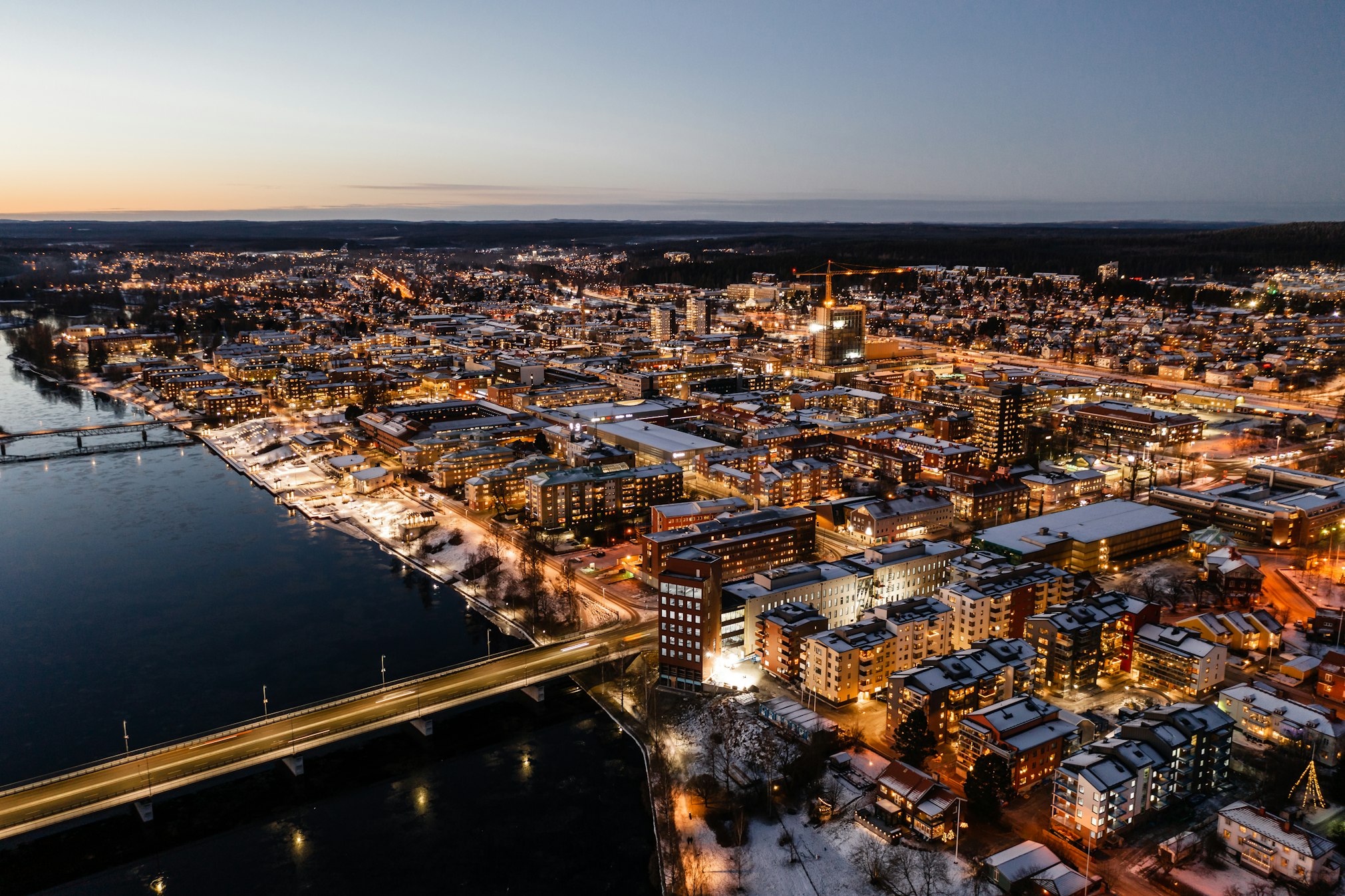The social impact of a gigafactory
23 April, 2024
Building a gigafactory in a small town is bound to have a profound impact on local communities, as demonstrated by Northvolt's experience in Skellefteå and Västerås over the past five years. With global investments bolstering local development, and a massive influx of talent, we are now able to look back on the effect that Northvolt has had on the communities in which it operates.

When Northvolt was launched in 2017, a central question was raised: What impact would this new emerging Swedish battery industry have on the cities hosting it?
Instances outside Asia were scarce, with previous European factories built on a smaller scale. Moreover, Swedish industry had largely witnessed downsizing or the disappearance of major sectors in recent decades. Those few that experienced substantial growth had done so over the span of a century.
Now, with approximately 1,000 individuals employed at Northvolt Labs in Västerås and over 3,000 at Northvolt Ett in Skellefteå, alongside 2,000+ construction workers employed at the site, we can finally begin to assess the economic, social and structural impact of the battery industry on the local community.
Global investments bolstering local growth
Financial investments have been the primary catalyst for the growth and development of the local regions, fueling groundworks, construction, machinery, hiring, and skills development.
However, both Labs and Ett were built before the US Inflation Reduction Act and the European Temporary Crisis and Transition Framework structurally changed the global industrial landscape. Therefore, only roughly 1 percent of the total 60 billion SEK (over $5.5bn USD) that has been invested into Northvolt's Swedish R&D and production comes from research and industrial development grants, and loans taken with support from Swedish Riksgälden and the European Investment Bank being paid at market rates.
Instead, global major financial institutions have been the main driver of growth, with over 80 percent of the total investment stemming directly from global capital being invested into Sweden – making the battery industry a growth engine for the entire Swedish economy.
The economic impact has manifested differently in the two cities. While Northvolt Labs has now emerged as one of the largest battery development campuses in the Western hemisphere, the city where it resides, Västerås, already experienced steady, natural growth. Consequently, the main impact has been observed in the development of an advanced electrification cluster in the vicinity of Northvolt Labs – where global companies such as ABB, Alstom and Hitachi also develop their adjacent research and production facilities. This has been supported by a city that prioritized improving conditions for international talent, exemplified by its development for an international English-speaking school in the area.
Skellefteå, however, has undergone a unique transformation in its development. Even predating Northvolt's arrival, the city embarked on a comprehensive transformation project that included notable endeavors such as the construction of a cutting-edge, 20-floor culture house and hotel made from wood, as well as the electrification of the local airport. Coupled with the creation of over 3,000 jobs at Northvolt and many thousands more in construction and supplier roles, this initiative has led to the largest population increase in half a century, making Skellefteå one of the fastest-growing cities in Sweden.
This impact is currently under scrutiny by academics and global media alike, with even the local radio station compiling examples of the city's name being pronounced by foreign media outlets, following the BBC's suggestion to simplify it to "She-left-you." Yet, the impact is also palpable to the naked eye, evident not only in major housing and infrastructure projects but also in the emergence of new restaurants, clubs, and shops, spurred by the rapid influx of wage-earning residents.
It's the people
Indeed, that’s likely the most defining impact of a gigafactory on a local community. It’s not the increase in property value, the extra investments among partners and suppliers, the addition to GDP – but the inflow of people, bringing world-leading talents from all parts of the world – in Northvolt’s case from over 110 different nations, spreading their knowledge and mixing it with local and national skills and expertise.
It has made both Skellefteå and Västerås into even more global cities, and been the driving force behind the innovations and solutions fueling the Swedish economy, with over 4 % of all patents filed in Sweden last year coming from Northvolt employees.
It's also worth noting how Northvolt employees have shared their experiences of feeling genuinely embraced by their new communities. From welcome parties to invitations from various social organizations, sports clubs, and places of worship, the warmth extended to new Northvolters from diverse backgrounds speaks volumes about the inclusive and supportive atmosphere fostered by their host cities and neighbors.
Does this mean that there aren’t challenges? Of course not. The city of Västerås is still working on providing rail transportation for the many commuters in the region, and the city of Skellefteå has a multitude of growing pains – where the constant need for new housing projects continues to be most urgent.
But the joy of growth is palpable, with high social acceptability in both communities. This sentiment is also fueled by the awareness that local industrial development is part of a greater solution to combat global climate change. Ultimately, for the growth, flourishing, and survival of local communities, that is undeniably the most significant impact of all.